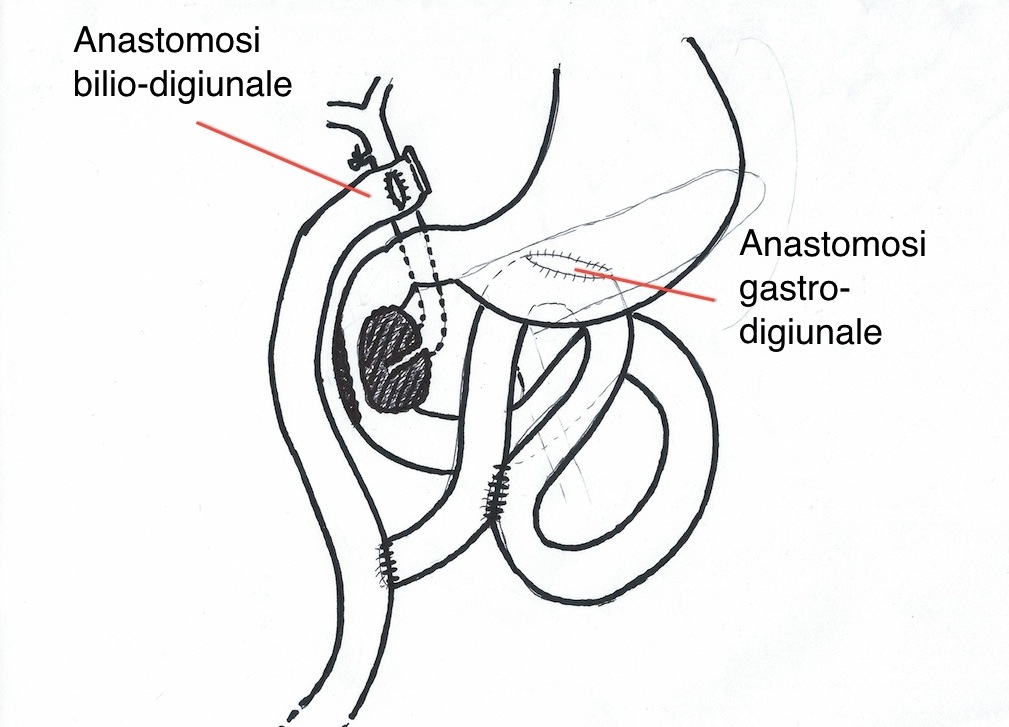Bypass operations for cancer
Bypass operations are considered if the pancreatic tumor is unresectable. These are palliative procedures that are mostly required in pancreatic head neoplasms, and that are intended to relieve or prevent symptoms, the most common being:
- Jaundice: it is the yellowing of the eyes and skin caused by the buildup of bilirubin in the body. When the portion of common bile passing within the pancreatic head becomes compressed or infiltrated by the tumor, bile can’t reach the intestines, and the level of bilirubin builds up
- Duodenal obstruction: the neoplasm may infiltrate the far end of the stomach or the duodenum, partly blocking them. This can cause nausea, vomiting, and pain that tend to be worse after a meal
Bypass procedures may be proposed if other less invasive palliative treatments (endoscopic stent placement) failed and the symptoms are worsening. Sometimes surgery may begin with the attempt to cure the patient (radical resection), but an unexpected locally advanced or a metastatic disease is found. In this case, the surgeon may continue the operation as a palliative procedure to relieve or prevent symptoms. Although recent advances of cross sectional imaging allow detailed evaluation of the pancreas, the accuracy of radiologic staging is not 100%, and the surgical exploration still plays the key role for the finally assessment of resectability.
Bypass operations can reroute the flow of bile from the common bile duct directly into the small intestine, bypassing the pancreas (hepatico-jejunostomy or choledoco-jejunostomy). The stomach connection to the duodenum can be rerouted at this time as well (gastro-jejunostomy). Figure 1 shows the double bypass procedure (hepatico-jejunostomy and gastro-jejunostomy).














